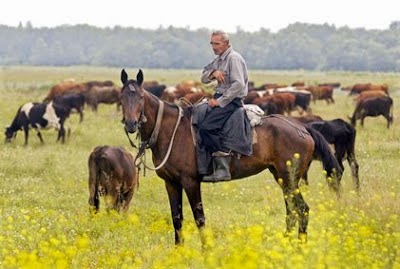
Land Privatization Failures Driving Extremism Among Balkars, Moscow Expert Says
By Paul Goble
Research conducted in the North Caucasus has shown that almost all conflicts in the region are in some way related to disputes over land control or ownership. Studies on rural extremism also confirm that the privatization of land into the hands of the rural population keeps such disputes from becoming violent. Unfortunately, in the North Caucasus, and among the Balkars of the Kabardino-Balkarian Republic (KBR) in particular, land was privatized into the hands of elite officials rather than into those of the peasants. As a result, a process that could have potentially eased ethnic conflicts has had the exact opposite effect, according to Denis Sokolov, a highly-regarded specialist on the region at the Russian Academy of Economics and State Service (Kavpolit.com, February 5).
In his proactively titled article, “The Balkar Question—Import Substitution via Revolution,” Sokolov argues that there are only two ways for the Balkars to avoid descending into anarchy and violence: “a revolution from below” or “a revolution from above.” Following the imposition of Western sanctions, he argues, many assumed that the North Caucasus could contribute to Russian food supplies and simultaneously reap the economic benefits. But “without institutional reforms and […] without a resolution of the land issue,” it will be impossible to boost the region’s economy or contribute to food supplies for the rest of Russia.
When government land was privatized in the 1990s, it was usually distributed to the local elite (both criminal and otherwise), which was usually of Kabardinian origin, rather than to those who could actually farm it (mainly ethnic Balkars). In 2005, Arsen Kanokov became president of Kabardino-Balkaria with a promise to change this. However, given the power of the elite and their strong hold on property in rural areas, Kanokov was unable to keep his campaign promise. On the contrary, the president’s initiative led to increased levels of banditry and even cattle rustling, as rural workers tried to take back what they felt was rightfully theirs.
The struggle over land in KBR is, in effect, a struggle for power rather than for property, although property is the marker of ethnicity and Islam remains the most important tool for mobilization. Sokolov argues that in order to back out of this dead end, the republic needs radical reform through either a “revolution from below” or a “revolution from above.” The former would involve the peasants revolting against the regime; the latter would occur if new leadership was willing to sacrifice some of the elite’s interests in order to support those who can actually farm the land, both for themselves and for the sake of the republic’s economy.
Because of their isolation from the “republic’s political machine”, which remains dominated by the more numerous and elite Kabardinians, ethnic Balkars are taking the lead in raising the land question and promoting the idea of a “revolution from below.” Thus, if a revolution does erupt in the KBR, it will mostly likely be led by the Balkars, and the Kabardinians will seek to present themselves as the defenders of order when, in fact, they will simply aim to defend the status quo.
A revolution from above is unlikely because of Moscow’s focus on short-term stability; and consequently, that makes a revolution from below more probable. In such a scenario, the Turkic Balkars are likely to be the driving force in KBR, even though they have received far less attention than the Kabardinians, a branch of the Circassians, up to now.




